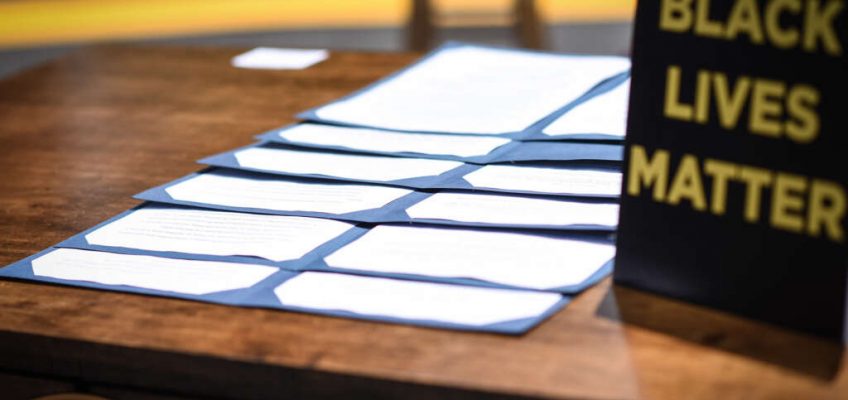By MICHAEL KUNZELMAN
WASHINGTON (AP) — Coming to court this week, a police officer’s widow wanted to prove that a man assaulted her husband during a mob’s attack on the U.S. Capitol and ultimately was responsible for the officer’s suicide nine days later. A jury’s verdict Friday amounted to only a partial victory for Erin Smith in a lawsuit over her husband’s death.
The eight-member jury held a 69-year-old chiropractor, David Walls-Kaufman, liable for assaulting Metropolitan Police Officer Jeffrey Smith inside the Capitol on Jan. 6, 2021. They will hear more trial testimony before deciding whether to award Erin Smith any monetary damages over her husband’s assault.
But the judge presiding over the civil trial dismissed Erin Smith’s wrongful-death claim against Walls-Kaufman before jurors began deliberating. U.S. District Judge Ana Reyes said no reasonable juror could conclude that Walls-Kaufman’s actions were capable of causing a traumatic brain injury leading to Smith’s death.
Reyes divided the trial into two stages: one on the merits of Smith’s claims and another on damages. For the damages phase, jurors are expected to hear attorneys’ closing arguments Monday.
In the meantime, the judge urged the parties to discuss a possible settlement over the weekend. Reyes said it would be “exceedingly rational” for both sides “to get this behind you” and avoid the time and expense of an appeal.
Erin Smith claimed Walls-Kaufman gave her husband a concussion as they scuffled inside the Capitol. Jeffrey Smith was driving to work for the first time after the Capitol riot when he shot and killed himself with his service weapon.
His widow claims Walls-Kaufman struck her 35-year-old husband in the head with his own police baton inside the Capitol, causing psychological and physical trauma that led to his suicide. Smith had no history of mental health problems before the Jan. 6 riot, but his mood and behavior changed after suffering a concussion, according to his wife and parents.
Walls-Kaufman, who lived near the Capitol, denies assaulting Smith. He says any injuries that the officer suffered on Jan. 6 occurred later in the day, when another rioter threw a pole that struck Smith around his head.
Walls-Kaufman served a 60-day prison sentence after pleading guilty to a Capitol riot-related misdemeanor in January 2023, but he was pardoned in January. On his first day back in the White House, President Donald Trump pardoned, commuted prison sentences or ordered the dismissal of cases for all of the nearly 1,600 people charged in the attack.
Trump’s sweeping act of clemency didn’t erase Smith’s lawsuit against Walls-Kaufman.
Erin Smith, the trial’s first witness, recalled packing a lunch for her husband and kissing him as he headed off to work on Jan. 15, 2021, for the first time after the riot.
“I told him I loved him, said I would see him when he got home,” she testified.
Within hours, police officers knocked on her door and informed her that her husband was dead. She was stunned to learn that he shot himself with his service weapon in his own car.
“It was the most traumatic words I’ve ever heard,” she recalled. “You just don’t know what to do.”
Walls-Kaufman’s attorney, Hughie Hunt, urged jurors to “separate emotion” and concentrate on the facts of the case.
“This is tragic, but that doesn’t place anything at the foot of my client,” Hunt said during the trial’s opening statements.
Smith’s body camera captured video of his scuffle with Walls-Kaufman. In his testimony, Walls-Kaufman said he was overcome by “sensory overload” and “mass confusion” as police tried to usher the crowd out of the Capitol.
“I couldn’t tell who was pushing who or from what direction,” he said.
The police department medically evaluated Smith and cleared him to return to full duty before he killed himself. Hunt said there is no evidence that his client intentionally struck Smith.
“The claim rests entirely on ambiguous video footage subject to interpretation and lacks corroborating eyewitness testimony,” Hunt wrote in a court filing in the case.
More than 100 law-enforcement officers were injured during the riot. Capitol Police Officer Brian Sicknick collapsed and died a day after engaging with the rioters. A medical examiner later determined he suffered a stroke and died of natural causes. Howard Liebengood, a Capitol police officer who responded to the riot, also died by suicide after the attack.
In 2022, The District of Columbia Police and Firefighters’ Retirement and Relief Board determined that Smith was injured in the line-of-duty and the injury was the “sole and direct cause of his death,” according to the lawsuit.




